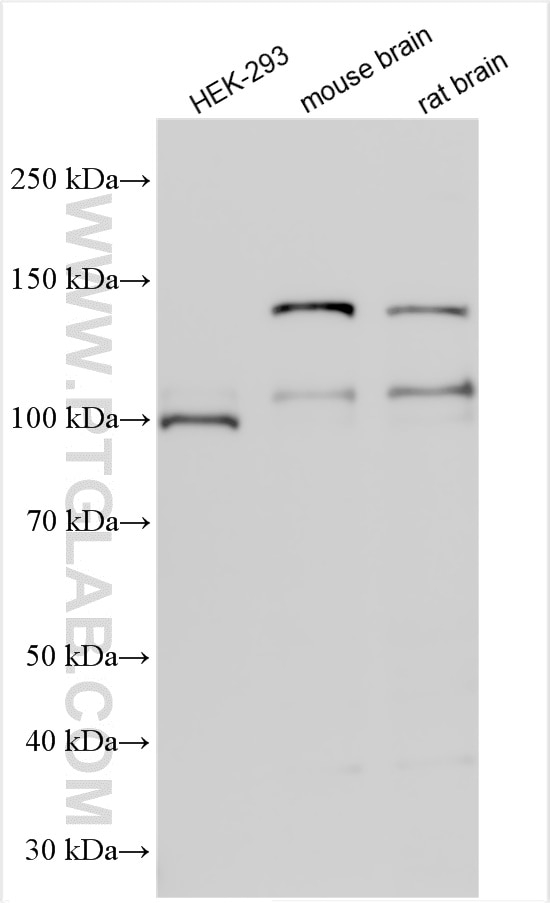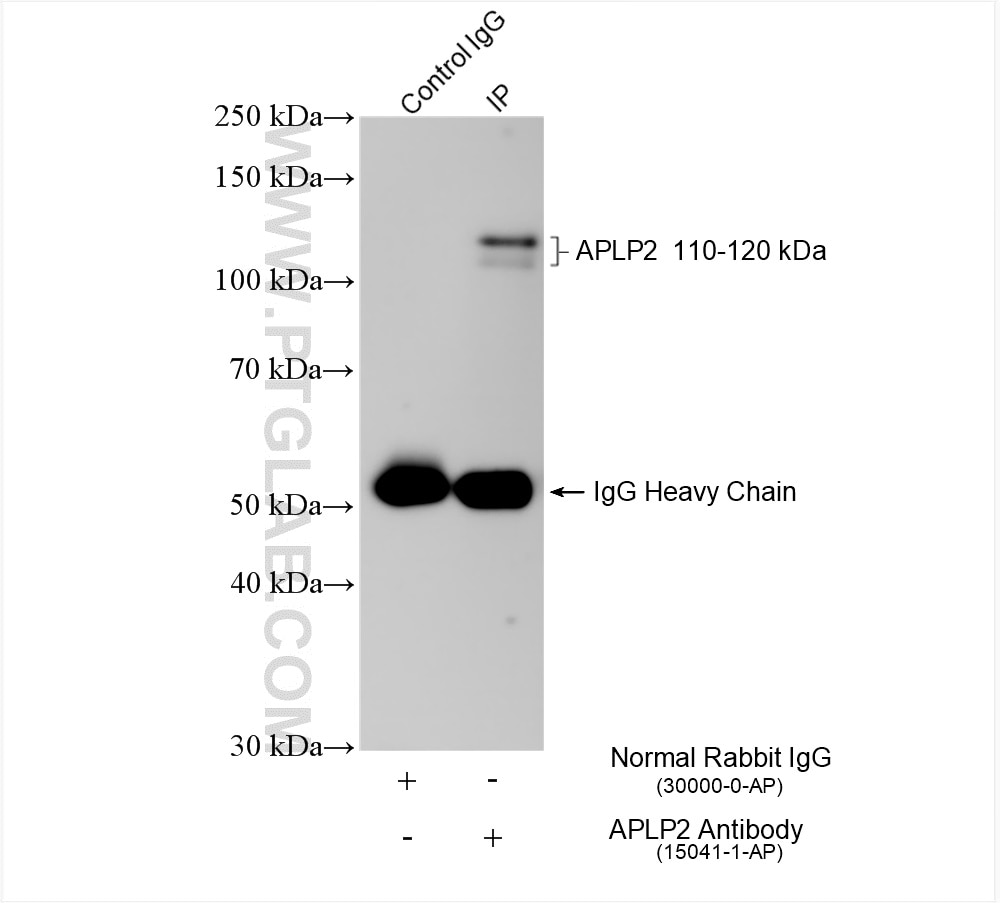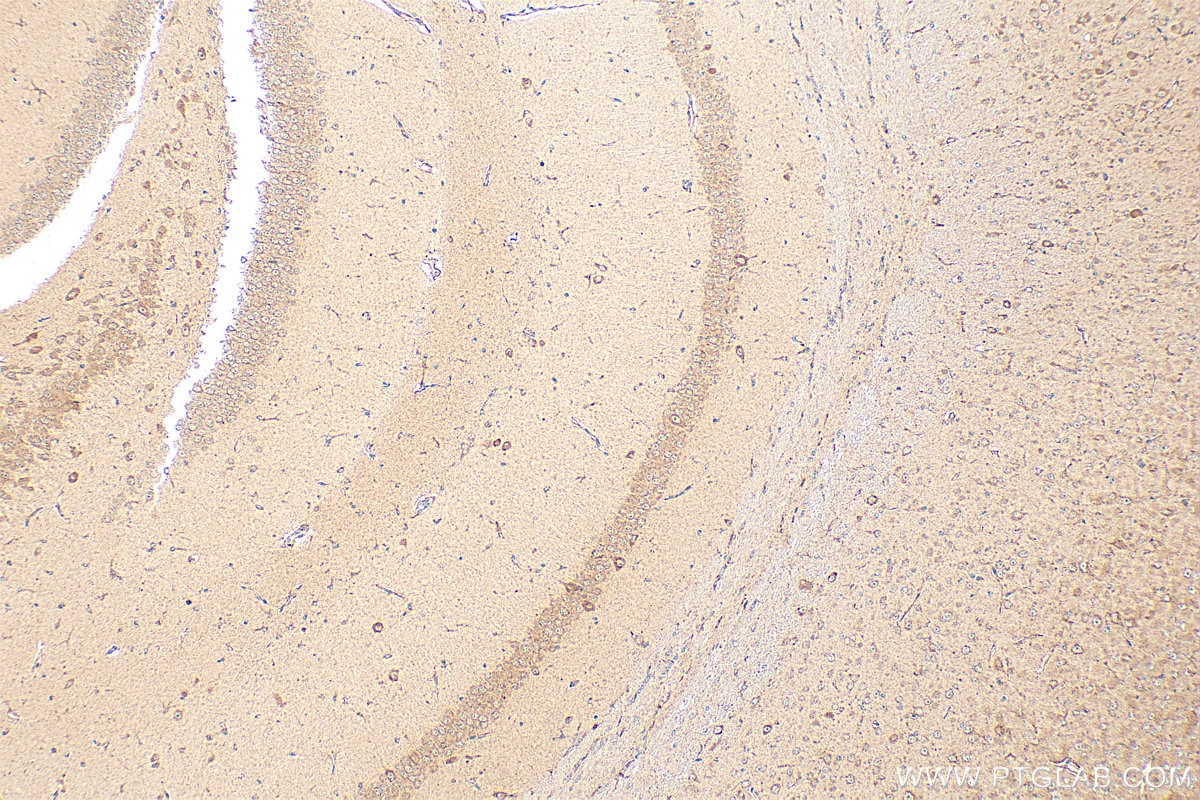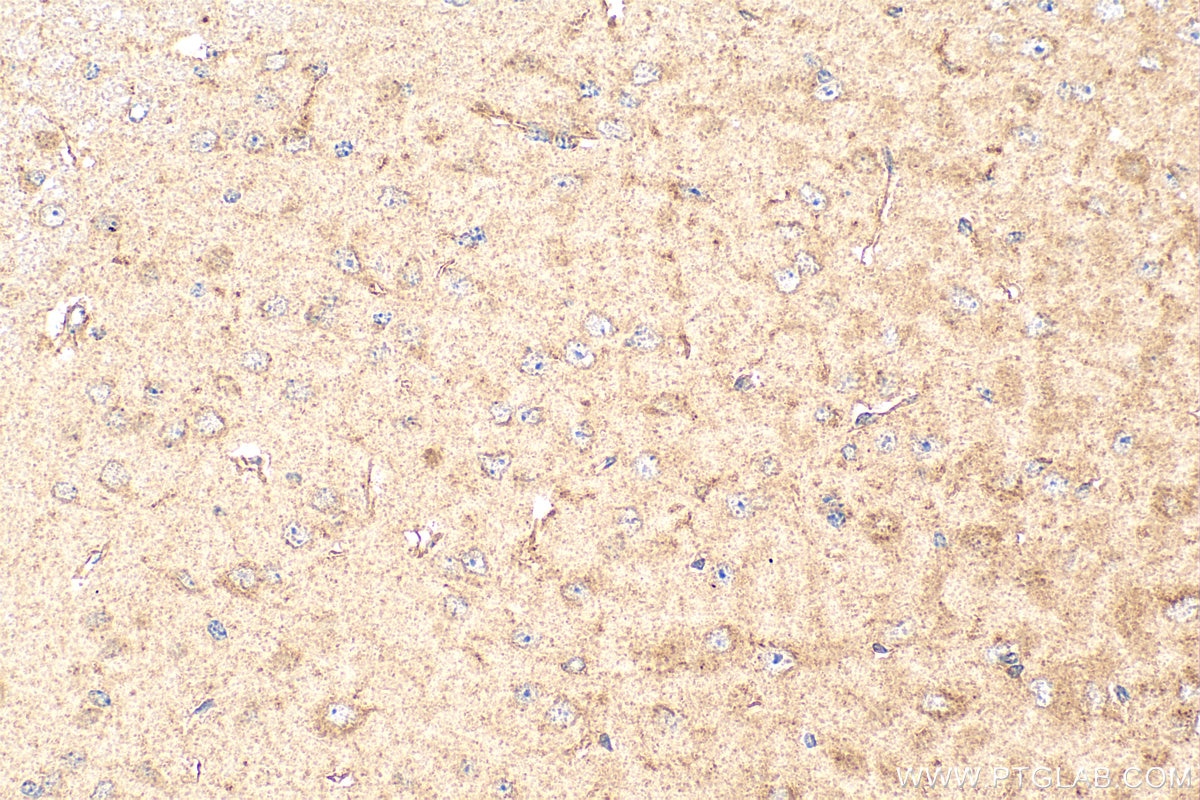APLP2 Polyklonaler Antikörper
APLP2 Polyklonal Antikörper für WB, IHC, IP, ELISA
Wirt / Isotyp
Kaninchen / IgG
Getestete Reaktivität
human, Maus, Ratte
Anwendung
WB, IHC, IP, ELISA, PLA
Konjugation
Unkonjugiert
Kat-Nr. : 15041-1-AP
Synonyme
Geprüfte Anwendungen
| Erfolgreiche Detektion in WB | HEK-293-Zellen, Maushirngewebe, Rattenhirngewebe |
| Erfolgreiche IP | Maushirngewebe |
| Erfolgreiche Detektion in IHC | Maushirngewebe Hinweis: Antigendemaskierung mit TE-Puffer pH 9,0 empfohlen. (*) Wahlweise kann die Antigendemaskierung auch mit Citratpuffer pH 6,0 erfolgen. |
Empfohlene Verdünnung
| Anwendung | Verdünnung |
|---|---|
| Western Blot (WB) | WB : 1:500-1:1000 |
| Immunpräzipitation (IP) | IP : 0.5-4.0 ug for 1.0-3.0 mg of total protein lysate |
| Immunhistochemie (IHC) | IHC : 1:50-1:500 |
| It is recommended that this reagent should be titrated in each testing system to obtain optimal results. | |
| Sample-dependent, check data in validation data gallery | |
Veröffentlichte Anwendungen
| WB | See 2 publications below |
Produktinformation
15041-1-AP bindet in WB, IHC, IP, ELISA, PLA APLP2 und zeigt Reaktivität mit human, Maus, Ratten
| Getestete Reaktivität | human, Maus, Ratte |
| In Publikationen genannte Reaktivität | human, Maus |
| Wirt / Isotyp | Kaninchen / IgG |
| Klonalität | Polyklonal |
| Typ | Antikörper |
| Immunogen | APLP2 fusion protein Ag6838 |
| Vollständiger Name | amyloid beta (A4) precursor-like protein 2 |
| Berechnetes Molekulargewicht | 87 kDa |
| Beobachtetes Molekulargewicht | 120 kDa |
| GenBank-Zugangsnummer | BC000373 |
| Gene symbol | APLP2 |
| Gene ID (NCBI) | 334 |
| Konjugation | Unkonjugiert |
| Form | Liquid |
| Reinigungsmethode | Antigen-Affinitätsreinigung |
| Lagerungspuffer | PBS with 0.02% sodium azide and 50% glycerol |
| Lagerungsbedingungen | Bei -20°C lagern. Nach dem Versand ein Jahr lang stabil Aliquotieren ist bei -20oC Lagerung nicht notwendig. 20ul Größen enthalten 0,1% BSA. |
Hintergrundinformationen
Amyloid precursor-like protein-2 (APLP2) is a member of the APP (amyloid precursor protein) family including APP, APLP1, and APLP2. APLP2 is ubiquitously expressed. It contains heparin-, copper- and zinc- binding domains at the N-terminus, BPTI/Kunitz inhibitor and E2 domains in the middle region, and transmembrane and intracellular domains at the C-terminus. APLP2 has been shown to regulate multiple cellular functions such as neurite outgrowth, axogenesis, corneal epithelial wound healing, cell adhesion, migration, and mitosis. The synergy of this protein and the APP is required to mediate neuromuscular transmission, spatial learning and synaptic plasticity. APLP2 has been implicated in the pathogenesis of Alzheimer's disease.
Protokolle
| PRODUKTSPEZIFISCHE PROTOKOLLE | |
|---|---|
| WB protocol for APLP2 antibody 15041-1-AP | Protokoll herunterladen |
| IHC protocol for APLP2 antibody 15041-1-AP | Protokoll herunterladenl |
| IP protocol for APLP2 antibody 15041-1-AP | Protokoll herunterladen |
| STANDARD-PROTOKOLLE | |
|---|---|
| Klicken Sie hier, um unsere Standardprotokolle anzuzeigen |
Publikationen
| Species | Application | Title |
|---|---|---|
iScience Using brain cell-type-specific protein interactomes to interpret neurodevelopmental genetic signals in schizophrenia | ||
Life Sci Alliance Quantitative proteomics identifies PTP1B as modulator of B cell antigen receptor signaling. | ||
Heliyon HMGA2 overexpression activates IGF2BP2 to stabilize APLP2 via m6A modification and promote pancreatic cancer progression | ||
J Biol Chem Familial Alzheimer's disease mutations in amyloid precursor protein impair calcineurin signaling to NMDA receptors |





